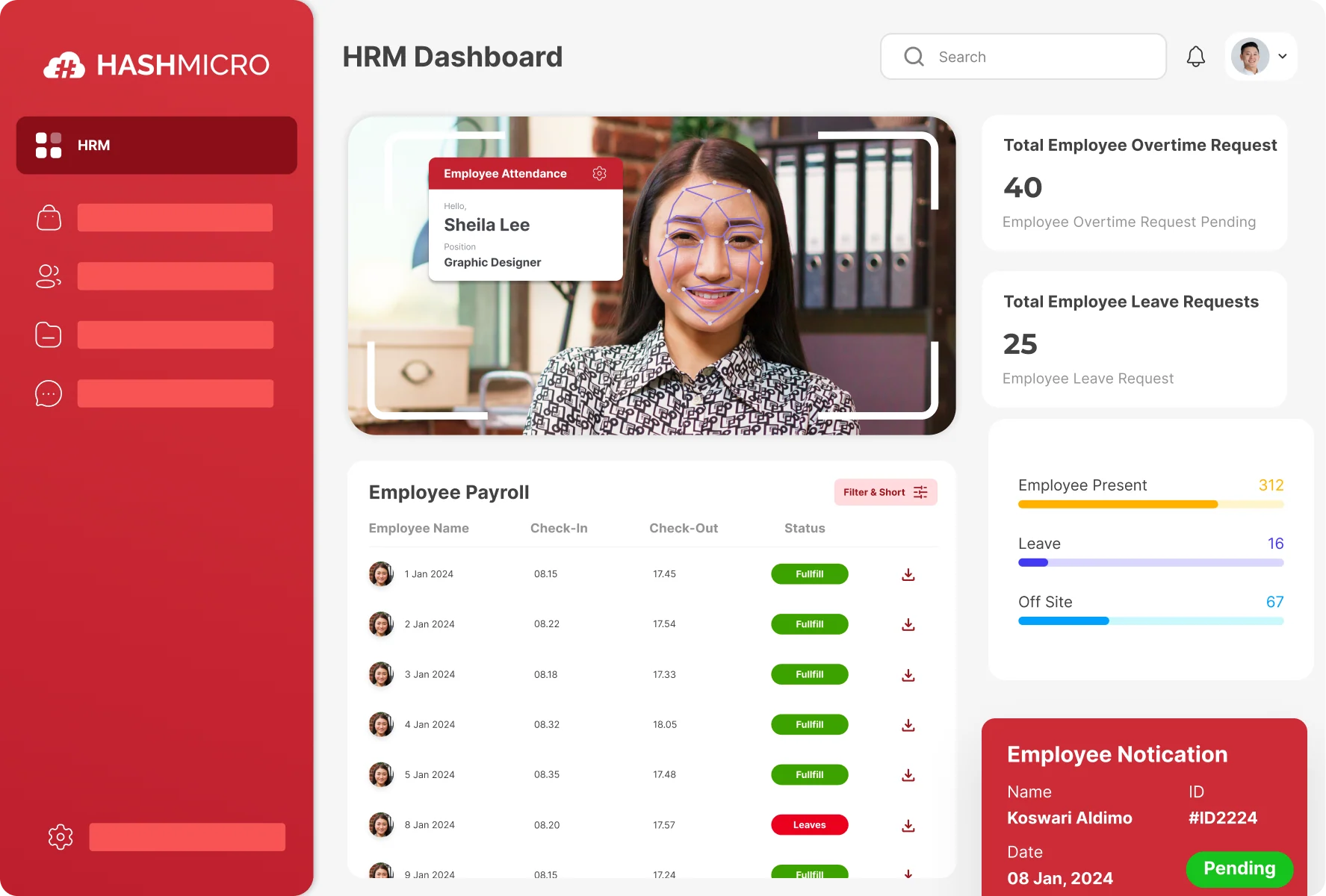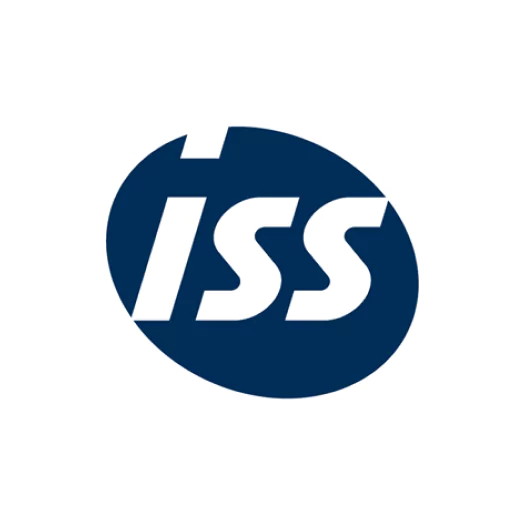Have you ever wondered why some workplaces thrive while others struggle with employee turnover? The secret often lies in how well companies prioritize their employees’ satisfaction. When employees feel valued, they stay longer and perform better, driving your business forward.
Imagine having a team that’s happy, motivated, and ready to go the extra mile every day, HashMicro can realize that for you! With the right strategies and tools, you can transform your workplace into one that supports growth and innovation.
Keep reading to discover actionable ways to boost employee satisfaction and unlock your team’s full potential!
Key Takeaways
|
Table of Contents
What is Employee Satisfaction?

Employee satisfaction means how happy employees are with their roles, work environment, and overall experience. It highlights their emotional connection, directly impacting productivity and work engagement. Employees who feel appreciated and supported contribute more positively to the company’s success.
Satisfied employees enjoy their daily tasks, fostering a stronger attachment to the workplace and its values. When companies prioritize employee well-being, they create a place where individuals perform at their best while feeling valued and respected.
Why is Employee Satisfaction Important?
When employees are satisfied, they work with greater focus, dedication, and efficiency, enhancing team performance, which is why they are really important to your company. Here are some other important things you need to know:
- Satisfied employees complete tasks faster, helping teams meet deadlines and avoid bottlenecks in workflows.
- Fewer mistakes from employees mean fewer setbacks and reduced costs on rework and corrections.
- A positive work culture prevents misunderstandings, encouraging better communication and teamwork across all levels.
- Fair workload distribution avoids employee burnout, ensuring everyone stays productive and motivated.
When organizations prioritize satisfaction, employees take pride in their work and are motivated to deliver better results. This leads to a more cohesive team dynamic and a stronger foundation for achieving company objectives efficiently.
Key Factors That Influence Employee Satisfaction
Recognition and rewards are key in making employees feel appreciated and motivated to perform their best. Rewards like bonuses or promotions further enhance their job satisfaction, creating a stronger commitment to the company.
Some factors you need to be aware of are:
- Recognition motivates employees to consistently deliver high-quality work.
- Rewards boost morale and create a sense of accomplishment.
- Employees feel valued, strengthening their loyalty to the organization.
- Tangible rewards provide added motivation and satisfaction.
- Regular appreciation fosters a positive and collaborative work environment.
- Recognized employees are more likely to stay engaged and productive.
By prioritizing recognition and rewards, your business cultivates a supportive and engaging workplace. This approach not only retains talented employees but also drives overall business success.
How to Measure Employee Satisfaction

Employee satisfaction is vital for any organization aiming to foster a productive and happy workforce. Measuring satisfaction effectively involves gathering insights and addressing specific concerns to ensure long-term employee engagement.
Here are some methods to assess and improve employee satisfaction:
- Employee Satisfaction Surveys: Regular surveys gather honest feedback on employee sentiments and areas needing attention. Short, anonymous questionnaires encourage openness and help identify trends that guide improvement efforts.
- Exit Interviews for Insights: Exit interviews provide clarity on why employees leave, uncovering unresolved issues. These insights allow organizations to address recurring concerns and enhance retention strategies.
- Informal Feedback Mechanisms: Casual check-ins and open-door policies foster open communication and trust. They provide an alternative to formal evaluations, capturing real-time feedback that complements overall strategies.
- Attendance and Turnover Rate Analysis: High absenteeism and turnover highlight dissatisfaction, pointing to areas needing attention. Monitoring these rates allows proactive adjustments to workplace policies and practices.
By implementing these methods, organizations better understand employee needs and sentiments. This proactive approach improves satisfaction and builds a stronger, more resilient workforce aligned with organizational goals.

How Employee Satisfaction Impacts Performance
Satisfied employees significantly impact how a business runs by enhancing productivity, morale, and overall performance. Here are some impacts you will see when your business has a high employee satisfaction rate:
- Improved Productivity and Motivation: Motivated employees perform their tasks with focus and energy, leading to higher productivity. Their enthusiasm will positively influence teamwork and overall job quality.
- Enhanced Workplace Culture: Employee satisfaction builds a collaborative and inclusive culture, attracting and retaining top talent. Teams thrive in environments that encourage innovation and mutual support.
- Higher Customer Satisfaction and Loyalty: Happy employees deliver excellent customer service, fostering long-term loyalty and positive relationships. Their positivity creates better customer experiences, resulting in glowing reviews and increased referrals.
- Increased Organizational Profitability: Employee satisfaction reduces turnover, minimizing costs associated with hiring and training new staff. A skilled and committed workforce drives long-term profitability through consistent performance.
Investing in employee well-being is a strategic move that fosters loyalty, teamwork, and resilience within the organization. This ensures a thriving workplace aligned with business goals and client expectations.
Strategies to Improve Employee Satisfaction
Improving employee satisfaction is important to the well-being of your whole company. Here are some ways that you could try to improve them:
Provide regular feedback and recognition
Regular feedback keeps employees informed about their performance and areas for improvement. It helps them grow professionally while understanding their value in the business.
Feedback also creates a foundation of trust and mutual respect between employees and management. When employees feel acknowledged, their motivation to excel increases, leading to improved team dynamics.
Foster a culture of open communication
Open communication encourages employees to express their concerns and share innovative ideas without hesitation. Employees who feel heard are more likely to remain engaged and committed.
A culture of open dialogue also helps identify potential challenges before they escalate into larger issues. Regular check-ins and approachable leadership create an environment where feedback flows freely.
Offer learning and development opportunities
Investing in learning opportunities empowers employees to enhance their skills and boost their confidence. Training programs prepare them for career advancement, creating a motivated and capable workforce.
Development initiatives also show that the organization values employee potential, fostering trust and engagement. When companies prioritize continuous learning, they improve workforce competency and gain a competitive edge in the industry.
Celebrate employee milestones
Recognizing milestones, such as work anniversaries or professional achievements, strengthens the connection between employees and the company. These celebrations show genuine appreciation for individual contributions, fostering a sense of belonging and pride.
By acknowledging both personal and professional successes, organizations humanize the workplace experience. Employees who feel valued are more likely to remain loyal and contribute positively.
Create flexible work schedules
Flexible work options, such as remote or hybrid setups, enable employees to balance personal and professional lives effectively. This approach reduces stress, improves focus, and prevents burnout, leading to higher productivity levels.
Employees who have control over their schedules are more likely to feel satisfied and engaged. Flexibility fosters trust and demonstrates the organization’s commitment to employee well-being.
Address employee concerns promptly
Responding quickly to employee concerns shows that the organization genuinely cares about their well-being. Proactive problem-solving prevents small issues from escalating, maintaining a harmonious work environment.
Listening to employees helps build trust and encourages open communication. When employees see their concerns addressed, they feel respected and valued. This commitment to resolving issues fosters loyalty and strengthens overall team morale.
Implement HashMicro’s HRM to Boost Employee Satisfaction
 Boosting employee satisfaction requires the right tools, like HRM software, to address common workplace challenges and enhance engagement. HashMicro’s HRM software offers features designed to simplify processes, improve communication, and foster a better work environment. These features directly help businesses support their teams effectively:
Boosting employee satisfaction requires the right tools, like HRM software, to address common workplace challenges and enhance engagement. HashMicro’s HRM software offers features designed to simplify processes, improve communication, and foster a better work environment. These features directly help businesses support their teams effectively:
- Automated Payroll Management: Ensure accurate and timely salary distribution while reducing manual errors, keeping employees satisfied with consistent pay. By using a professional payslip template, you can ensure all salary components are clearly outlined for transparency. Providing a payslip sample can further help employees understand their pay breakdown, enhancing trust and clarity.
- Employee Self-Service Portals: Allow employees to access payslips, leave requests, and schedules independently, empowering them and saving time.
- Performance Tracking and Feedback: Provide structured feedback through automated performance evaluations, helping employees grow and stay motivated.
- Leave and Attendance Monitoring: Simplify leave management and attendance tracking to avoid conflicts and ensure fair processes.
- Customizable Benefits Management: Offer tailored employee benefits, ensuring everyone feels valued and cared for within the organization.
By leveraging these features, businesses can create a more supportive and efficient workplace. Using HRM system software such as HashMicro’s HRM helps organizations prioritize employee well-being, leading to higher satisfaction, better retention, and overall success.
Conclusion
Employee satisfaction refers to how content employees are with their roles, work environment, and overall experience. It improves productivity, reduces turnover, and fosters loyalty, creating a thriving workplace. Companies can build a stronger and more resilient workforce by understanding and addressing employee needs.
Creating a happy and motivated team requires the right strategies and tools, like HashMicro’s HRM software. It simplifies processes and enhances workplace engagement from automated payroll to performance tracking. Start transforming your workplace today—schedule a free demo with HashMicro and see the difference!

Frequently Asked Questions
-
What is meant by employee satisfaction?
Employee satisfaction refers to how happy employees are with their roles, environment, and experiences. It reflects their emotional connection, influencing productivity and engagement.
-
What is the key to employee satisfaction?
The key to employee satisfaction is recognition, open communication, and a supportive work environment. These factors create loyalty, motivation, and better performance.
-
What is an example of employee satisfaction?
An example of employee satisfaction is when employees feel valued through recognition and growth opportunities. They stay motivated, perform well, and contribute positively to the company.




































